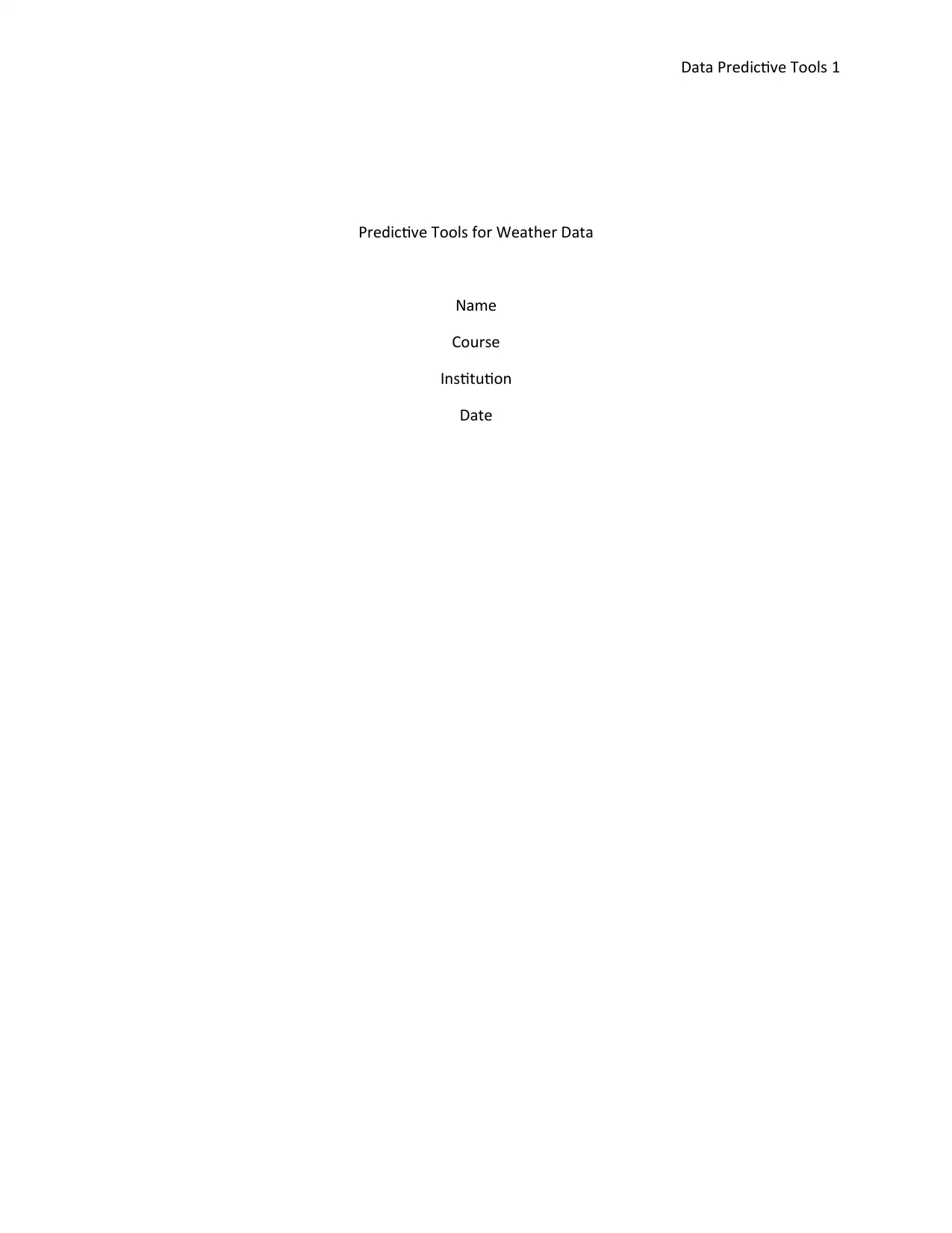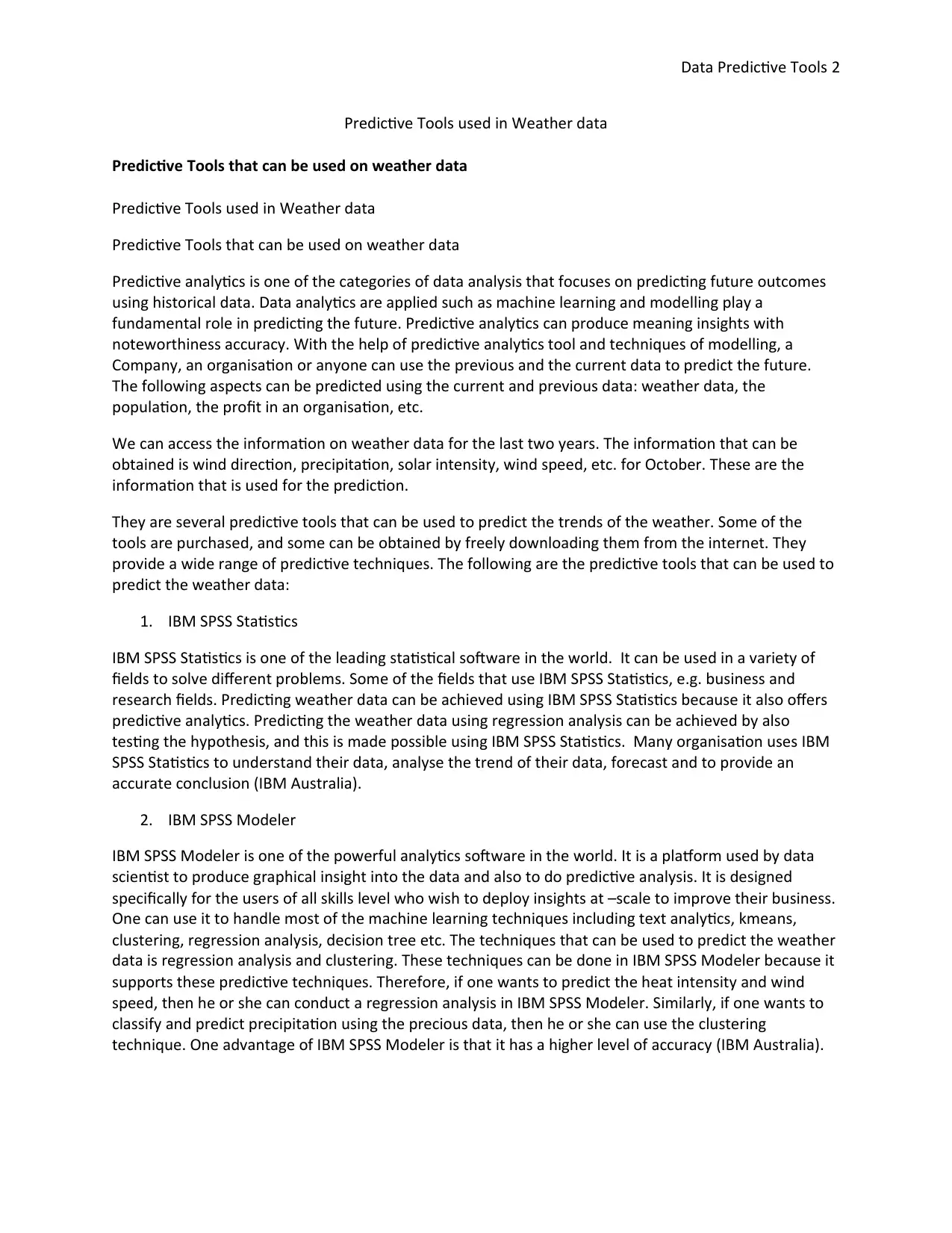Weather Data Prediction: Exploring Tools for Future Forecasting
VerifiedAdded on 2023/01/18
|3
|603
|96
Report
AI Summary
This report focuses on the prediction of weather data using predictive tools. The assignment utilizes historical weather data, including solar intensity, precipitation, wind direction, and wind speed from the past two years, to forecast future weather patterns. The report identifies and analyzes two key tools: IBM SPSS Statistics and IBM SPSS Modeler. IBM SPSS Statistics is highlighted for its capabilities in regression analysis, hypothesis testing, and overall data analysis, essential for understanding weather trends and making predictions. IBM SPSS Modeler is presented as a powerful platform for data scientists, offering graphical insights and support for various machine learning techniques such as regression analysis and clustering. The report explains how these tools can be used to predict specific weather elements like heat intensity, wind speed, and precipitation. The report also highlights the accuracy and advantages of each tool in providing meaningful insights for weather forecasting.
1 out of 3










![[object Object]](/_next/static/media/star-bottom.7253800d.svg)